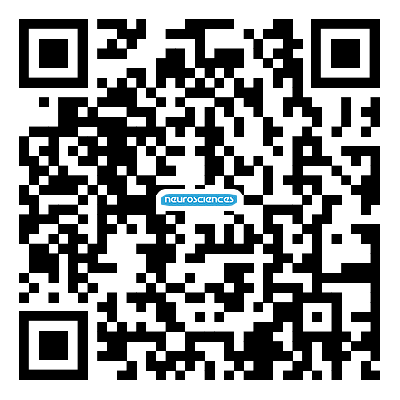Isolated unilateral chorea: a diagnostic challenge
Movement disorders of paraneoplastic etiology are very rare, representing solely about 1% of all paraneoplastic neurological syndromes.[1] The most frequently associated carcinoma is small-cell lung cancer, although several others are reported such as hematologic, bowel, breast, prostate and bladder. It was reported an association with CV2/CRMP5, Anti-Hu/ANNA, CASPR2 and Yo antibodies, which are detectable in serum in most cases, isolated or in association.[1-4] However, in a minority of cases an autoantibody cannot be detected.[1] The antibody most frequently associated with paraneoplastic chorea is CV2/CRMP5, followed by Anti-Hu/ANNA. In a PNS EuroNetwork cohort[1] only 1/13 patients presented with unilateral chorea.
We present the case of a 62-year-old woman, smoker, who was observed in a neurology clinic because of involuntary movements of the left arm with one-month evolution, without any other complaint. At neurological examination, it was clear a unilateral chorea of the left limbs, worse in the left arm. The remaining examination was unremarkable. Treatment with risperidone and haloperidol were tried, without any symptom improvement. An etiology was extensively sought. The cerebral magnetic resonance imaging was normal. Hu/ANNA1-Ab and CV2/CRMP5-Ab in serum were negative. The patient refused a search for other antibodies and a lumbar puncture. A thoracic computed tomography revealed a mass in the superior lobe of the left lung. The biopsy allowed the diagnosis of a small-cell lung cancer. The patient started on chemotherapy seven months after the first symptoms and radiotherapy afterwards. Light respiratory complaints (dry cough) started only after the first chemotherapy cycle, approximately nine months after the beginning of the chorea. The chorea improved gradually along the first four cycles of treatment. She remained with occasional weak involuntary movements of the left hand. Unfortunately, eight months after the beginning of the oncological treatment, the disease worsened suddenly and she died a few weeks later.
Although the older age, subacute evolution of the symptoms and lack of response to neuroleptics pointed to a paraneoplastic etiology, the lack of other neurological or systemic symptoms and particularly the strict unilaterality were suggestive of other causes. There are only a few reported cases of isolated unilateral chorea of paraneoplastic etiology.[1,3,4]
Our patient started with chorea several months before the definitive diagnosis of lung cancer was made and manifested respiratory symptoms only a couple months after the beginning of chemotherapy. The most frequently associated antibodies were excluded in serum and we were unable to pursue the investigation because of patient refusal. A higher rate of detection of paraneoplastic autoantibodies in cerebrospinal fluid and serum when compared to serum alone is reported.[5] Therefore, in the present case we can’t exclude an association of the hemichorea with an undetected antibody.
We would like to emphasize the great significance of an extensive and precocious search for an auto-immune and, particularly, paraneoplastic cause in patients with late-onset chorea, even when isolated and/or focal, in order to provide an early diagnosis and a precocious start of oncological treatment, to allow an improvement in the prognosis.
Financial support and sponsorship
Nil.
Conflicts of interest
There are no conflicts of interest.
Patient consent
Written consent was obtained from the patient versed in the article.
Ethics approval
This kind of article does not require document for ethics approval.
REFERENCES
1. Vigliani MC, Honnorat J, Antoine JC, Vitaliani R, Giometto B, Psimaras D, Franchino F, Rossi C, Graus F; PNS EuroNetwork. Chorea and related movement disorders of paraneoplastic origin: the PNS EuroNetwork experience. J Neurol 2011;258:2058-68.
2. Krolak-Salmon P, Androdias G, Meyronet D, Aguera M, Honnorat J, Vighetto A. Slow evolution of cerebellar degeneration and chorea in a man with anti-Yo antibodies. Eur J Neurol 2006;13:307-8.
3. Vynogradova I, Savitski V, Heckmann JG. Hemichorea associated with CASPR2 antibody. Tremor Other Hyperkinet Mov (N Y) 2014;4:239.
4. Vernino S, Tuite P, Adler CH, Meschia JF, Boeve BF, Boasberg P, Parisi JE, Lennon VA. Paraneoplastic chorea associated with CRMP-5 neuronal antibody and lung carcinoma. Ann Neurol 2002;51:625-30.
Cite This Article
How to Cite
Download Citation
Export Citation File:
Type of Import
Tips on Downloading Citation
Citation Manager File Format
Type of Import
Direct Import: When the Direct Import option is selected (the default state), a dialogue box will give you the option to Save or Open the downloaded citation data. Choosing Open will either launch your citation manager or give you a choice of applications with which to use the metadata. The Save option saves the file locally for later use.
Indirect Import: When the Indirect Import option is selected, the metadata is displayed and may be copied and pasted as needed.
About This Article
Copyright
Author Biographies

Data & Comments
Data















Comments
Comments must be written in English. Spam, offensive content, impersonation, and private information will not be permitted. If any comment is reported and identified as inappropriate content by OAE staff, the comment will be removed without notice. If you have any queries or need any help, please contact us at [email protected].